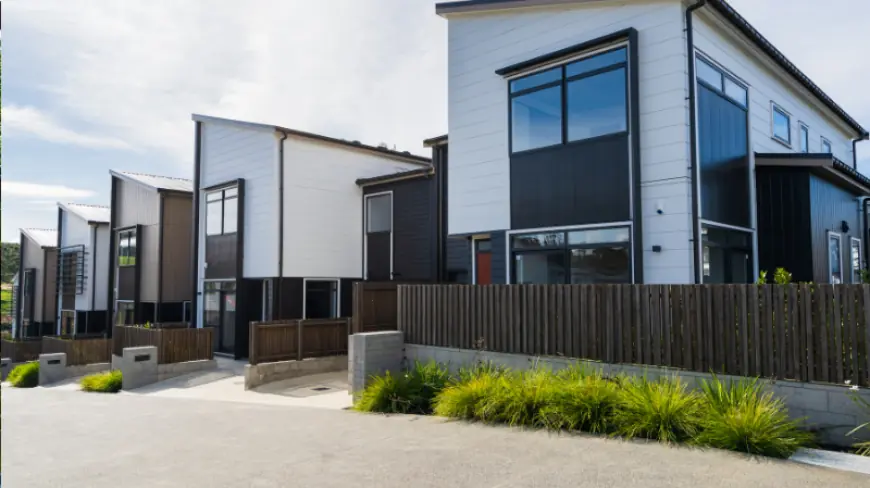Australia Commercial Real Estate Market: Projected Growth and Key Insights (2024-2032)
The Australian commercial real estate market, valued at AUD 50.14 billion in 2023, is projected to grow at a CAGR of 4.40% from 2024 to 2032, reaching AUD 73.87 billion by 2032. Explore the drivers, trends, and opportunities in office, retail, and industrial properties in this growing market.

The Australia commercial real estate market, valued at AUD 50.14 billion in 2023, is experiencing significant growth across various sectors, including office spaces, retail properties, and industrial facilities. This market is expected to continue expanding at a compound annual growth rate (CAGR) of 4.40% between 2024 and 2032, potentially reaching AUD 73.87 billion by 2032. This article delves into the factors driving the growth of the Australian commercial real estate market, emerging trends, key opportunities, and challenges that businesses and investors may face.
Understanding the Commercial Real Estate Market
Commercial real estate refers to properties that are used primarily for business purposes, such as office buildings, retail stores, industrial warehouses, and mixed-use developments. This market plays a crucial role in the economic infrastructure of Australia, providing spaces for businesses to operate and contribute to the country’s overall growth.
The commercial real estate market in Australia includes various segments, each with unique dynamics and demand drivers. The main property types in this sector are:
- Office Spaces: These include buildings and spaces for businesses, such as corporate offices, coworking spaces, and professional services.
- Retail Properties: This segment includes shopping centers, malls, and standalone retail outlets where goods and services are sold.
- Industrial Real Estate: This category covers warehouses, distribution centers, manufacturing facilities, and logistics spaces crucial for supply chain operations.
The commercial real estate market in Australia is influenced by several macroeconomic factors, including population growth, economic development, and technological advancements. The market also faces challenges and opportunities related to changing consumer behavior, environmental considerations, and regulatory developments.
Key Drivers of Growth in the Australian Commercial Real Estate Market
-
Strong Economic Performance and Urbanization
Australia’s consistent economic growth and urbanization trends are contributing to the demand for commercial real estate. Major cities like Sydney, Melbourne, and Brisbane are witnessing an influx of businesses, both domestic and international. As businesses expand, the need for office spaces, retail outlets, and industrial facilities rises.
The population growth in urban areas drives demand for new infrastructure, further boosting commercial real estate development. As more people move to cities, the commercial sector adapts by developing mixed-use properties that combine residential, office, and retail spaces in one location.
-
Post-Pandemic Demand for Office Spaces
While the COVID-19 pandemic led to a temporary decline in demand for office spaces, there is a strong rebound on the horizon. Many businesses have transitioned to hybrid or fully remote working models, but a significant number still require physical office spaces for collaboration, client meetings, and organizational purposes.
As businesses recognize the importance of maintaining physical workspaces, demand for flexible office spaces and coworking environments is expected to increase. Commercial real estate companies are increasingly adapting to this shift by providing innovative and customizable office solutions.
-
E-commerce Growth Driving Industrial Real Estate Demand
The rise of e-commerce in Australia has dramatically increased the demand for industrial properties, particularly warehouses and distribution centers. Retailers are increasingly relying on fast, efficient logistics networks to meet the growing online shopping trend. As a result, industrial real estate is expected to be one of the fastest-growing segments within the commercial real estate market.
Companies are also investing in technologically advanced warehouses that leverage automation, robotics, and data analytics to streamline operations. This trend will continue to drive the need for more sophisticated industrial spaces in key locations across Australia.
-
Increased Retail Property Reinvestment
Although retail properties faced challenges during the pandemic, the sector is bouncing back as consumer spending increases. With the recovery of the economy, retailers are seeking prime retail locations in high-traffic areas. There is also a significant trend toward experiential retail spaces, where customers engage with brands in more immersive, physical environments.
Retail property developers are focusing on enhancing customer experiences by incorporating entertainment, dining, and other services into shopping centers. This trend helps attract foot traffic and supports long-term growth for retail spaces.
-
Sustainability and Green Building Initiatives
Environmental sustainability is becoming a major focus in the commercial real estate sector. Green building certifications like LEED (Leadership in Energy and Environmental Design) and NABERS (National Australian Built Environment Rating System) are now essential for attracting tenants and investors.
Commercial real estate developers are incorporating energy-efficient features, renewable energy solutions, and eco-friendly materials to meet sustainability standards. Properties that meet these criteria are not only more attractive to eco-conscious businesses but are also becoming more profitable due to reduced energy consumption and operational costs.
Emerging Trends in the Australian Commercial Real Estate Market
-
Flexible and Hybrid Workspaces
The rise of flexible work arrangements, including hybrid and remote work, has led to a surge in demand for flexible office spaces and coworking environments. Companies are increasingly looking for office spaces that can be customized to accommodate different work styles, team sizes, and hybrid models.
Commercial real estate developers are responding by creating adaptable workspaces that offer shared facilities, private offices, and collaborative zones. These spaces are designed to foster creativity and collaboration while accommodating the growing need for flexibility in the workforce.
-
Technology-Driven Real Estate Solutions
Technology continues to play an important role in reshaping the Australian commercial real estate market. From property management to tenant experiences, new technologies like artificial intelligence (AI), the Internet of Things (IoT), and smart building systems are improving efficiency and enhancing the customer experience.
For example, smart office buildings equipped with IoT sensors can optimize lighting, heating, and cooling systems based on occupancy. These systems not only contribute to sustainability but also help reduce operating costs for building owners.
-
Increased Investment in Regional and Suburban Commercial Properties
As companies embrace remote and hybrid work models, there is a growing shift toward regional and suburban commercial properties. Many businesses are exploring office spaces outside of major city centers to reduce overhead costs and offer employees a better work-life balance.
The suburban commercial real estate market is expected to see strong growth as businesses seek affordable office spaces with access to public transport and amenities. Additionally, the rise of telecommuting allows businesses to decentralize their operations, reducing reliance on high-rent areas.
-
Mixed-Use Developments
Mixed-use developments that combine residential, office, and retail spaces are gaining popularity in urban centers. These developments create vibrant communities by offering everything from shopping and dining to professional services in one location. This trend responds to growing consumer demand for convenience and accessibility.
Investors and developers are increasingly focusing on mixed-use projects to optimize land usage and create long-term value. These developments not only serve residents and workers but also attract foot traffic, benefiting retail tenants and businesses.
-
Real Estate Investment Trusts (REITs)
Real Estate Investment Trusts (REITs) have become a popular investment vehicle in Australia’s commercial real estate market. REITs allow investors to pool their capital and invest in large-scale commercial properties without the need for direct ownership. This model offers liquidity, diversification, and access to high-quality commercial real estate investments.
As the commercial real estate market continues to grow, REITs are expected to become an increasingly important source of capital, providing funding for new developments and acquisitions.
Challenges Facing the Australian Commercial Real Estate Market
-
Interest Rate Fluctuations
The Australian commercial real estate market is sensitive to fluctuations in interest rates, which can significantly affect property values, development costs, and investor confidence. Rising interest rates may lead to higher borrowing costs for property developers and investors, potentially slowing down growth in the market.
-
Supply Chain Disruptions
The construction of new commercial properties is also subject to supply chain disruptions, including delays in the delivery of materials and labor shortages. These factors can increase construction costs and impact project timelines.
-
Changing Consumer Preferences
Consumer preferences for retail and office spaces are constantly evolving. With the growing trend of online shopping and remote work, businesses may reassess their demand for physical spaces, leading to shifts in demand for commercial properties.
-
Regulatory Compliance
The commercial real estate market in Australia is subject to various regulatory requirements, including zoning laws, building codes, and environmental standards. Changes in regulations can affect property development projects and may require additional investment to comply with new rules.
Future Outlook and Opportunities
The Australian commercial real estate market is expected to continue its steady growth, with a projected CAGR of 4.40% from 2024 to 2032. Key opportunities lie in flexible workspaces, green buildings, and regional developments. As businesses adjust to changing economic conditions and evolving work styles, the demand for innovative commercial properties will continue to rise.
The future of commercial real estate in Australia will be shaped by technological advancements, sustainability initiatives, and consumer behavior trends. Investors and developers who adapt to these changes and focus on future-proofing their portfolios will be best positioned for success in the growing market.
What's Your Reaction?
 Like
0
Like
0
 Dislike
0
Dislike
0
 Love
0
Love
0
 Funny
0
Funny
0
 Angry
0
Angry
0
 Sad
0
Sad
0
 Wow
0
Wow
0
























































